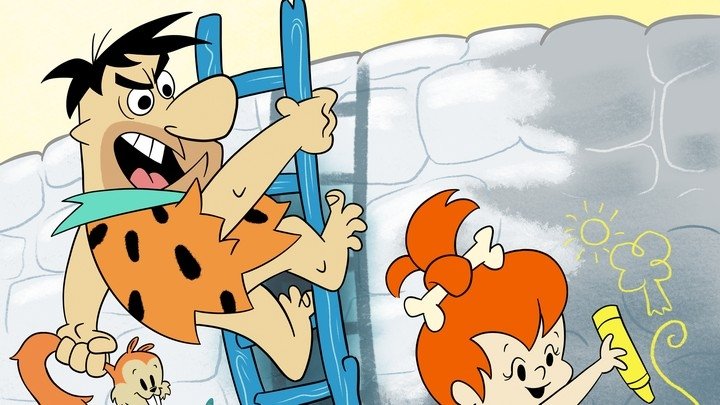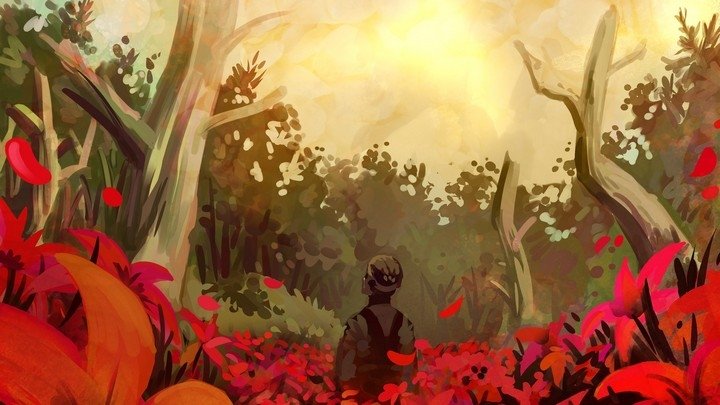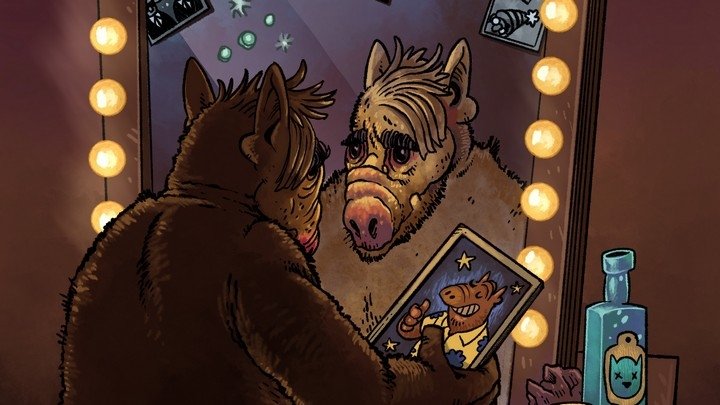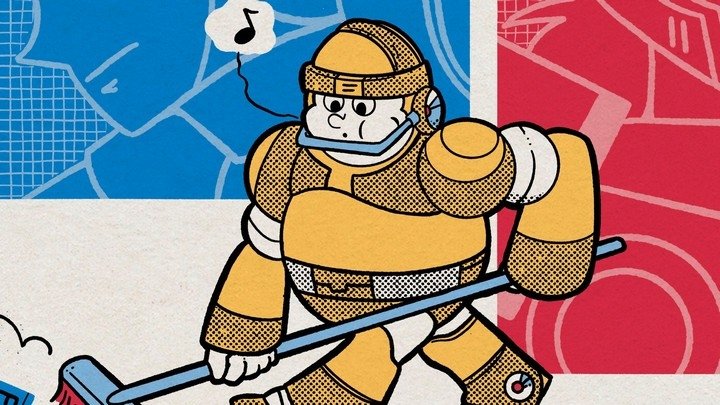All Together Then: Castlevania Dominus Collection
Soma&Jonathan&Charlotte&Shanoa.
This was a nice surprise, wasn't it, Nauties? Konami shadow-dropping the Castlevania Dominus Collection during a Nintendo Partner Showcase was something to celebrate, especially given the appalling indie showing that preceded it. But that's a moan I can save for the socials. What we've got here is something I've wanted since the excellent Castlevania Advance Collection, which sensibly grouped the three Game Boy Advance Castlevania titles into one handy-dandy launcher; Circle of the Moon, Harmony of Dissonance and Aria of Sorrow. Now, you may argue as I do that Aria was very much the cream of the crop, but the story of Soma Cruz remained incomplete on modern systems. Until now, that is. Dominus Collection packs in the three DS games Dawn of Sorrow, Portrait of Ruin and Order of Ecclesia, titles that are ruddy expensive on the second-hand market and - better yet - all of them are exceptionally good fun to play. I've resurrected the All Together Then feature in order to properly, thoroughly review this amazing (and affordable) little bundle, covering each of the games available in what I hope is sufficient detail. I'll also go over the collection's extra features at the end. I can't think of a pithy way to end this paragraph, so let's just get on with it, shall we? All Together Then!

Castlevania: Dawn of Sorrow (2005, Konami)
A game I was slavering for at the time, Dawn of Sorrow did not disappoint. Carrying over player character Soma's ability to absorb the souls of vanquished enemies via random drops (oh, you're gonna get used to them) was one thing, but allowing you to synthesise new weapons as well as upgrade your existing souls added a whole bunch of stuff to the experience. Hamstrung a little by the Nintendo DS touch screen, unlocked abilities allowed you to interact with breakable blocks by, yes, touching them with the stylus. Unfortunately this wasn't and still isn't much fun; a Metroidvania's power-ups should improve your ability to move around and explore in a dynamic way, not just let you smash blocks to clear a path.
The boss fights are great, but the Magic Seals required to defeat them were frustratingly unintuitive - nothing was more annoying than failing to draw one of the Seals and having to continue fighting the boss, especially when it was a particularly difficult one who would then kill you. Thankfully, the Magic Seal stuff has been replaced with basic QTEs; they're not a perfect solution but in execution are infinitely more reliable than the original method. The blue breakables are unfortunately still present, and while you can still use the touch screen on your Switch or simple mouse clicks on PC, you'll be forced to use the right analog stick and R2/RT in order to destroy them on PlayStation or Xbox. This is by no means a game-breaking issue, but it is a little bit of a faff. I can't really think of a better way to fix these small issues without removing the touch stuff completely, which I imagine developers M2 would have done if they could.
Nonetheless, Dawn of Sorrow is mostly brilliant, though I marginally prefer Aria of Sorrow for having a much more dynamic endgame; here you're presented with a series of doors depicting particular enemies, requiring you to use their souls in order to open the way forward. That's pretty contrived, no? Still, it doesn't get in the way of what a wonderful time Dawn of Sorrow generally offers, with scores of enemies to defeat, an enormous (but accessible) map to explore, and some really tremendous music that still puts me into a pleasantly nostalgic mood whenever I hear it. I prefer its follow-up for its refinements (which I'll get to in a minute), but Dawn is still a terrific time and absolutely worth playing.

Castlevania: Portrait of Ruin (2006, Konami)
Ah, now this is a beauty. Prevailing online sentiment used to be that this was the weakest of the Castlevania DS trilogy, but those people are wrong and possibly quite stupid. Taking control of Jonathan Morris (son of Quincey Morris of Dracula fame) and Charlotte Aulin, you'll be using both characters to spank an enormous variety of monsters through a reasonably enormous variety of locations. Jonathan is the tank, using all manner of armaments and sub-weapons to annihilate beasties, while Charlotte is a spellcaster who can deal terrific damage as well as providing support. Cleverly, you can utilise both characters at once by using the R button to either call Charlotte to cast her equipped spell, or Jonathan to throw his current sub-weapon. It's a thoroughly enjoyable little mechanic, allowing for terrific build variety when taking into account both characters' capacity to don armour and accessories dropped by enemies or hidden throughout the maps. Yes, that's maps, because Portrait of Ruin is packing not just a castle to explore, but a clutch of cursed paintings you can leap into like a much more violent Super Mario 64, and it's in these daubings that you'll find some of the strangest environments in the series. The likes of City of Haze, Forest of Doom and Sandy Grave offer up some very different, very cool places to whip skeletons - the latter being an ancient Egyptian-themed zone - and there's even the rather brilliant Nation of Fools to contend with, seemingly a gigantic circus that houses its own ruined city built around a rather hellish centrepiece.
Every second in Portrait of Ruin is spent improving your characters. Besides the usual levelling up by defeating monsters, you can also upgrade Jonathan's sub-weapons to "Mastery"; using a sub-weapon on an enemy you then kill will grant you a number of SP, all of which counts towards Mastering that tool. I've seen this decried as "grindy", and - to be fair - it is, but my take on the whole grinding thing is that you can only disrespect the player's time (a faintly absurd notion to my mind) if the player isn't enjoying playing the game, and I find Portrait of Ruin an absolute pleasure just to move around in. If you're throwing your equipped sub-weapon at every monster and hitting it at least once, you can then finish it off with your more powerful whip, sword, axe, spear, etc. You don't need to kill the monster with the sub-weapon to get the SP, so it feels completely organic to me. If you ignore the Mastery system until post-game and decide to go for 100%, I feel like that's on you. Even then, there are late-game items which mitigate the issue by increasing the amount of Mastery granted by each kill.
Item drops, however, are much more of a concern. Now, again I must stress that I don't really have much of a problem with them - they are easier to get than in most IGAvanias, with both equipment and spells that make them more common, but some of the in-game Quests require certain drops and it could be frustrating killing the same enemies over and over hoping for them to just give up their stash. It's up to you whether or not you bother with this stuff, but enthusiasts won't be upset either way. Because they're enthusiasts, the clue's in the name. I personally wanted to see what all the different monsters were packing, because some of them drop some truly absurd and/or broken items, some of which synergise nicely with other in-game goals. That's the thing about Portrait of Ruin - it's a game with a hell of a lot of stuff to do if you want to do it, which you very much don't have to. There's plenty to enjoy here even outside of the grindier objectives, including the best final battle in the entire series, a hidden area full of extra-tough monsters, secret rooms out the wazoo and the aforementioned Quests obtained from the mysterious ghost known initially as "Wind". I wonder who he could be, and if his identity ties into the brilliant Castlevania: Bloodlines in any way? It does, by the way.
This is my personal pick of the bunch, but I appreciate that it will rub some people the wrong way with its unusual structure and at-times repetitive gameplay. If I could criticise anything, I'd say that a certain puzzle boss skews a little on the unfair side, and the final four locations being reskins of existing ones (and all housed in a single room) gives off the impression of a rush job - if not the feel of one. Castlevania fans ought to be in seventh heaven with this, steeped as it is in series lore and with consistently enjoyable series fanservice. Cool and creative as hell.

Castlevania: Order of Ecclesia (2007, Konami)
Wow, this game is really hard. Not so much that I haven't beaten it multiple times, of course - snoot snoot - but it is notably more difficult and frustrating than its predecessors thanks to employment of many types of enemy resistances and weaknesses, requiring you to change up your loadout more often than you ever would in Dawn or Portrait, both of which have reliable endgame and post-game equipment. Order, though, does things differently - and, in my view, not always to its credit. It's cool that it's so challenging, but I felt like that challenge often came at the expense of playability, with some bosses dealing ludicrous damage before you really get a chance to figure out what's going on with them. I'm also not entirely crazy about the combat. Your player character, Shanoa, utilises "Glyphs", magic-based weapons obtained either in the environments or absorbed from enemies. In order to do the best damage, you'll need to equip one on each attack button and alternate timed presses in order to swing/fire rapidly. Thing is, even these basic attacks are now tied to your MP, which will rapidly drain with consecutive attacks. This is definitely different, but it feels different for the sake of it rather than because it adds any meaningful strategy. Running out of MP and being unable to attack feels bad! Still, it's something you'll likely get over pretty quickly and does offer a good number of different combinations to take advantage of.
Structurally I find the game a bit of a mess, too. Rather than a more traditional castle (shh, don't tell them) you'll be accessing different areas via an in-game map, using a terrorised village as a hub world. Problem is, a fair number of these locations are essentially straight lines, flat and straightforward trudges through not much more than an onslaught of enemies with nothing in the way of platforming or exploration. I don't know why they put these in the game at all, let alone kept them in until it went gold. They're among the worst levels in Castlevania history and I can't conceive of a valid defence for them. Naturally there are many other superior stages, but I have no room in my heart for these rather silly and completely linear places.
That's enough complaining, though. Order is the best-looking, most stylistically cohesive game of the three and has the most interesting story to boot. There are a ton of new monsters and each of the boss battles, while difficult, is enjoyable to learn; there are even bragging rights medals awarded for conquering each boss without taking a hit. Thanks to the Glyph system and the fact enemy resistances actually matter, your equipment is more important than ever, with innumerable necessary combinations and accessories that drastically change things up. Secret areas once again abound, this time challenging your platforming skills as well as your combat ability. It's very tough, but also somewhat generous - absorbing a Glyph you already possess increases each of your base stats by a single point, making stumbling across them while backtracking worthwhile. There's also a new sort-of crafting system in which you gather materials for the inhabitants of Wygol Village as you rescue them, though this can be irritating as so many of its components are either randomly dropped by enemies or found in also mostly randomised treasure chests. Thankfully these caches also respawn, meaning it's always worth retracing your steps.
Despite my negativity above, it is a very good game and one lauded by gamers for its difficulty - I just don't think it's always the right kind of difficulty. Still, you may passionately disagree and even if you don't, you'll find a great deal to enjoy here.

Haunted Castle Revisited (M2, 2024)
Amusingly buried in the Dominus Collection launch trailer, M2 created and included a brand new remake of the much-maligned 1987 arcade game Haunted Castle, because of course they did. Following up their excellent WiiWare title Castlevania: The Adventure Rebirth, this is a totally overhauled take on a very, very bad game which goes so far as to make it actually good. While the basic level concepts are much the same, every stage has been redesigned and lengthened, every boss given additional attack patterns, and your hero made much more durable and powerful. It's still pretty short, and unlike the original it's very easy thanks to both unlimited continues and generally less than punishing action, though there is a Hard Mode for those wanting something with a bit more teeth (the infinite retries can also be disabled). It looks and sounds superb and finally offers some measure of redemption for the Haunted Castle name, though the original is also included here in case you wanted a third way to own it on the same console following Anniversary Collection: Arcade Classics and Arcade Archives: Haunted Castle.
---
The Castlevania Dominus Collection has been a long time coming and absolutely failed to disappoint, though it's difficult to see how it possibly could have given the quality of the games included. As far as extras go, there's a fairly extensive art gallery and compendium for each game, showcasing the various enemies and items along with all their drops. In a nice touch, you can even hop from an enemy to its collectables with a simple button press. Screen options are somewhat limited, though I was happy with the default three-screen layout - main game on the left and status screens stacked on the right ala the PC ports of Azure Striker Gunvolt. Some will dislike the inability to make the game window truly full-screen, but you'd have to be pretty petulant to let it spoil the fun you'll have with these three bangers and similarly banging bonus game. You're also able to save state/rewind as per most retro re-releases, but again I urge you not to in order to preserve any kind of challenge.
With only a select few Castlevania titles yet to see a contemporary re-release (and Symphony of the Night/Rondo of Blood stuck on PS4 for whatever reason), fans have been rather spoiled by these compilations. Without wanting to sound greedy, any chance of Castlevania Chronicles, lads? Still, I am more than satisfied with Dominus Collection, a purchase of terrific quality, content and value. Finally the DS is getting another time in the sun. One of the easiest recommendations I've ever made, I strongly suggest you get this in at your earliest convenience.




